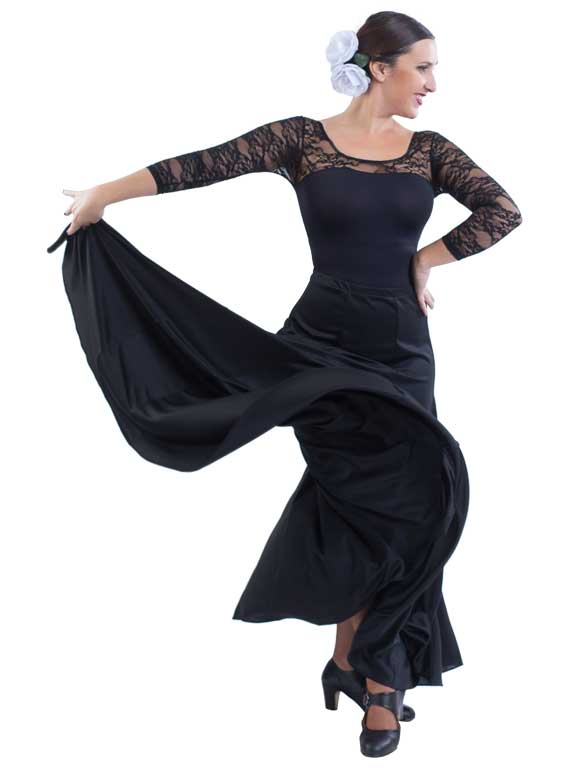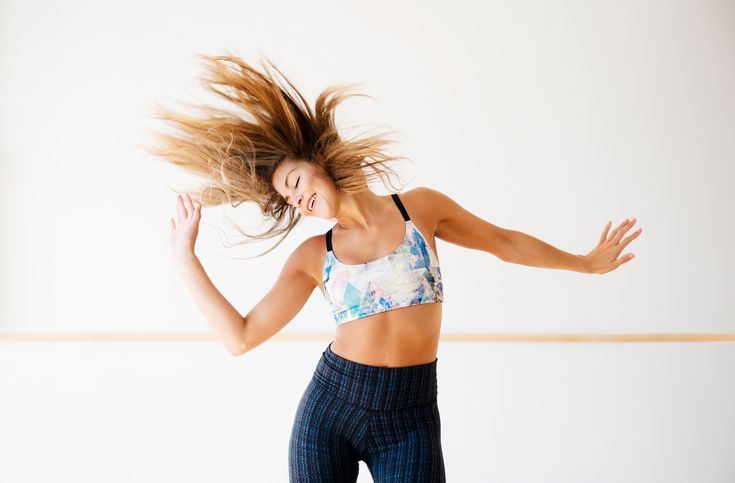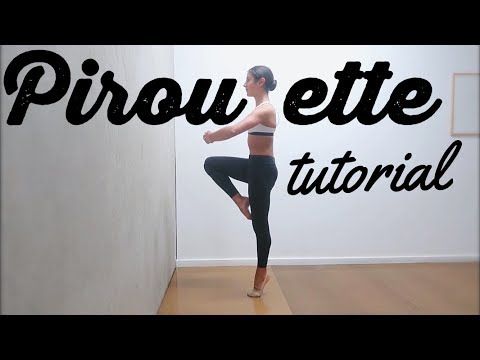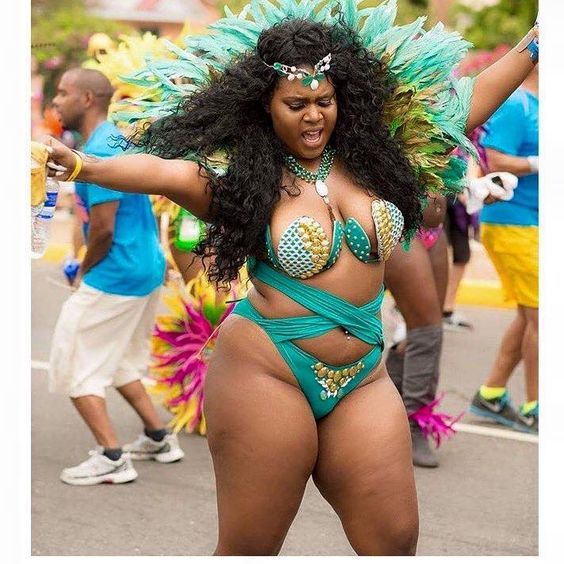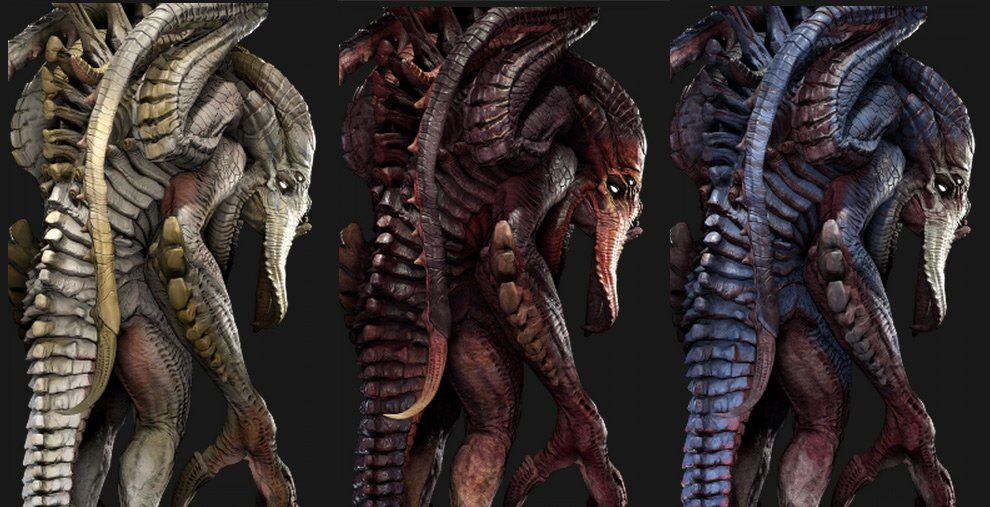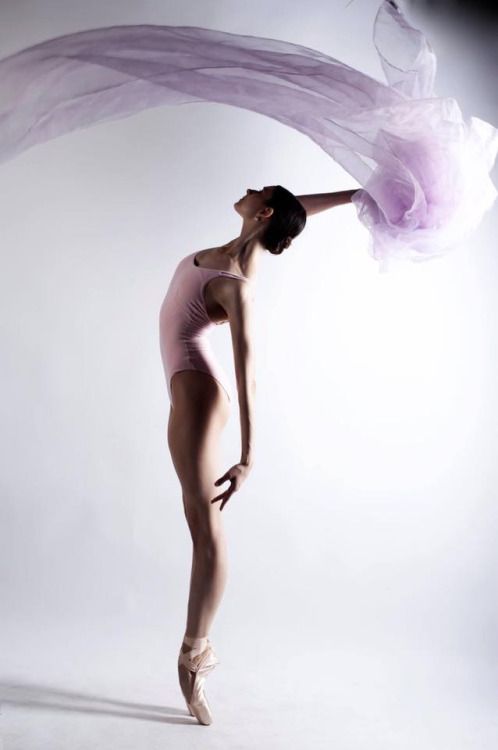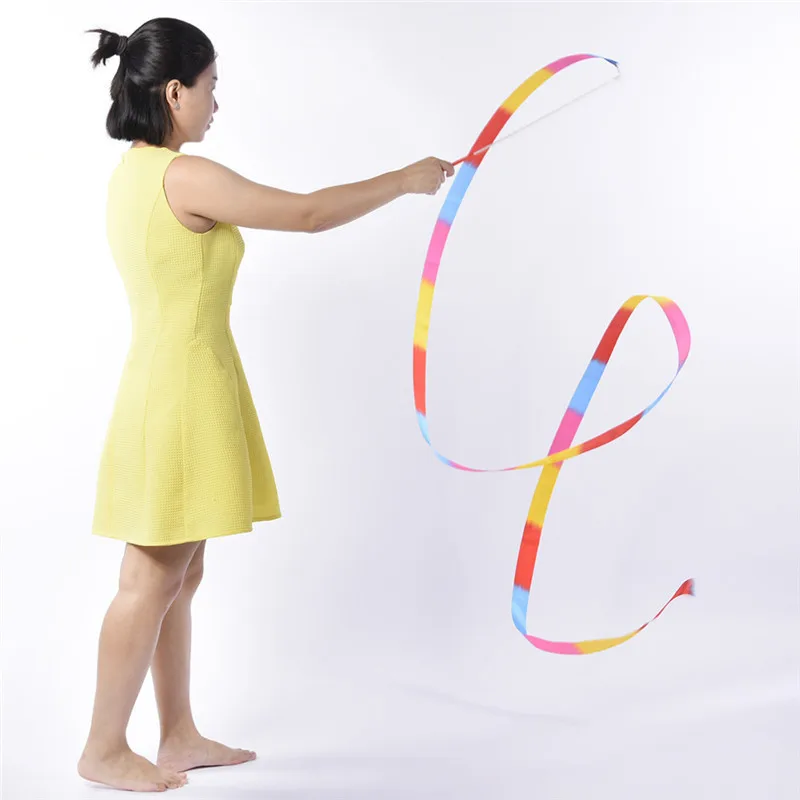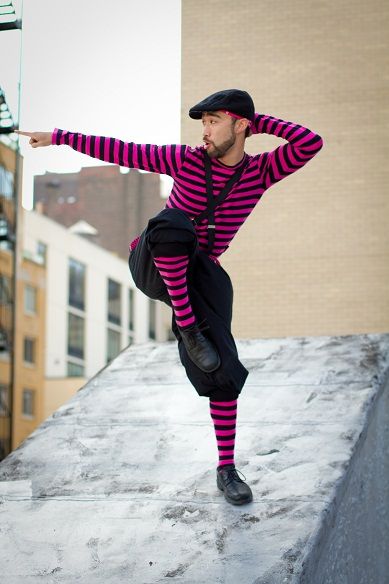How to dance modern jazz
Modern Jazz - The History of Dance
Modern Jazz
|
Vernacular, Authentic Or Modern, What Is Jazz Dance? • Solo Jazz Dance
(Solo) Jazz dance is an umbrella term collecting many dancing styles with different history. Let’s clarify a very common and equally most confusing topic of what is the difference between vernacular, authentic, modern and solo jazz dance. This way we can understand the characteristics and history behind each better.
This way we can understand the characteristics and history behind each better.
To be proficient in any specific or chosen art form, one needs to know the history, the journey of the specific creative expression and the aesthetic in question
Dolly Henry
According to Patricia Cohen, Master Registered Dance Educator, jazz dance evolved through the first half of the 20th century to include elements of both Africanist and European dance. In order to better understand what jazz dance is we need to refer to it as a continuum, based in West African roots with diverging vernacular and theatrical branches. Each of the branches are continually creating new offshoots that gradually but inevitably generates newer blended jazz dance forms.
Jazz dance tree
The history of jazz dance is best understood by thinking of it as a tree.
The jazz dance tree, by Kimberly Testa (In L. Guarino and W. Oliver, Jazz Dance: A History of the Roots and Branches).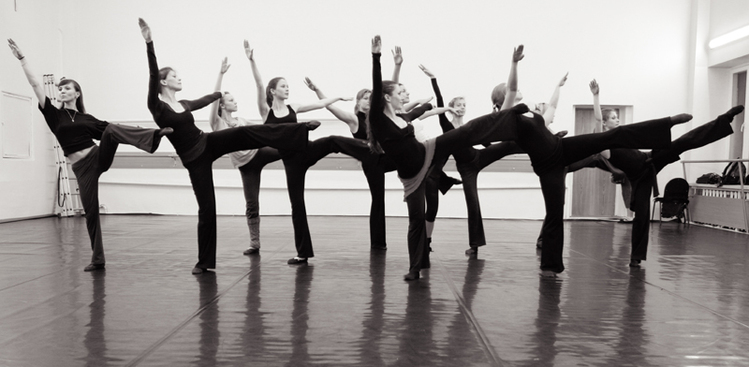
The roots of jazz dance are African. Its trunk is vernacular, shaped by European influence, and exemplified by the Charleston and the Lindy Hop. From the vernacular have grown many and varied branches, including tap, Broadway, funk, hip-hop, Afro-Caribbean, Latin, pop, club jazz, popping, B-Boying, party dances, and more.
Interestingly, today the term “jazz dance” can be confusing as to what it refers to. Nowadays, it is often connected to modern dance (which is a fusion between jazz dance and contemporary) and ballet-based dance forms, which carry some jazz dance characteristics but are only loosely (or not at all) connected to jazz music. Although from the end of the 1910’s term “jazz dance” was referring to black dance forms that are deeply connected to jazz music styles.
The term “authentic jazz dance” is a good alternative to use today in order to be understood correctly when referring to the original black jazz dance forms.
Let’s start our journey through the jazz dance history by clarifying the general confusion that is often made with the names.
What is solo jazz (dance)? Is it the same as authentic or vernacular jazz?
Nowadays the swing dance community refers to solo jazz dance (jazz steps/ vintage jazz/ jazz roots) as dancing alone to jazz music styles. It comes without any influences of ballet or any other contemporary techniques. It is mainly characterised by improvisation, syncopated steps and rhythms, call and response to music, all while featuring the vocabulary and steps of the vernacular jazz tradition.
Solo Jazz can be danced free and improvised or in routines such as Shim Sham Shimmy, Big Apple or Tranky Doo.
Alfred "Pepsi" Bethel was a jazz dancer, choreographer, and leader of the Pepsi Bethel Authentic Jazz Dance Theater. He is known for choreographing the Lindy Hop jazz routine Tranky Doo. Pepsi Bethel 1977. Nathaniel Tileston photo in New York July 1977 at Clark Center Dance FestivalEssentially, it is a general term to group many dance styles under one “umbrella” name. It can refer to anything from the pre-cakewalk dances of mid -19th century to post war era styles and be bop.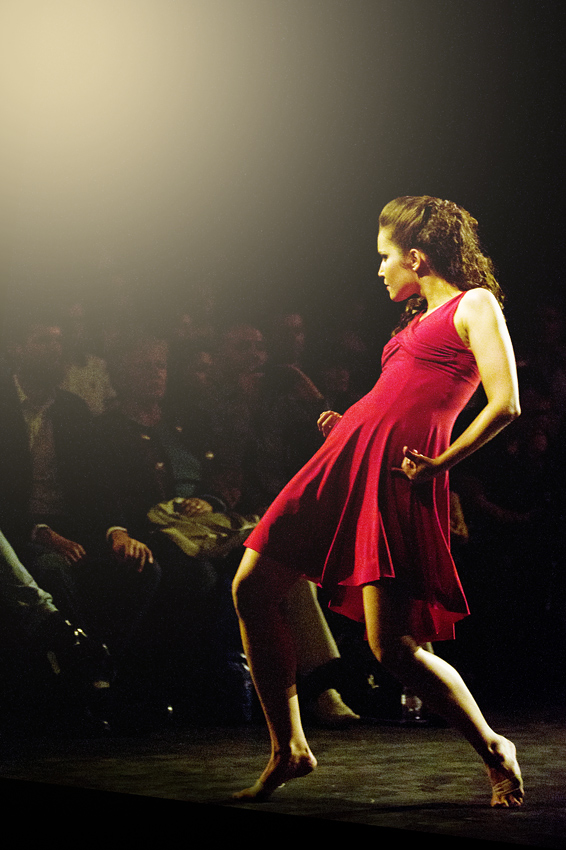
What is the difference between authentic and vernacular jazz?
Authentic Jazz
Let’s first understand the meaning of the word “authentic”, which is of undisputed origin and not a copy, genuine. The term “authentic jazz dance” is in use from the end of the 1950’s when writer and researcher Marshall Stearns began to use it, in the attempt to differentiate it from the modern jazz dance which has little or nothing to do with jazz music.
Authentic jazz is vernacular jazz from the early 20th century and it includes the Cakewalk, the Charleston, the Black Bottom, and the Lindy hop.
Authentic jazz movements like the Boogies, the Suzie Q (Susie Q), the Tacky Annie (Tack Annie), can be seen in chorus line dancers performing in "soundies" (a type of short musical clips), vaudeville acts, musicals of the 20’s, 30’s and 40’s. They could also include tap, toe-heels steps, shuffles, the over-the-top, adding syncopations and rhythms to the music it was danced to. All of these movements can be described as vernacular due to the common origin they share: African-American social dances born from everyday life.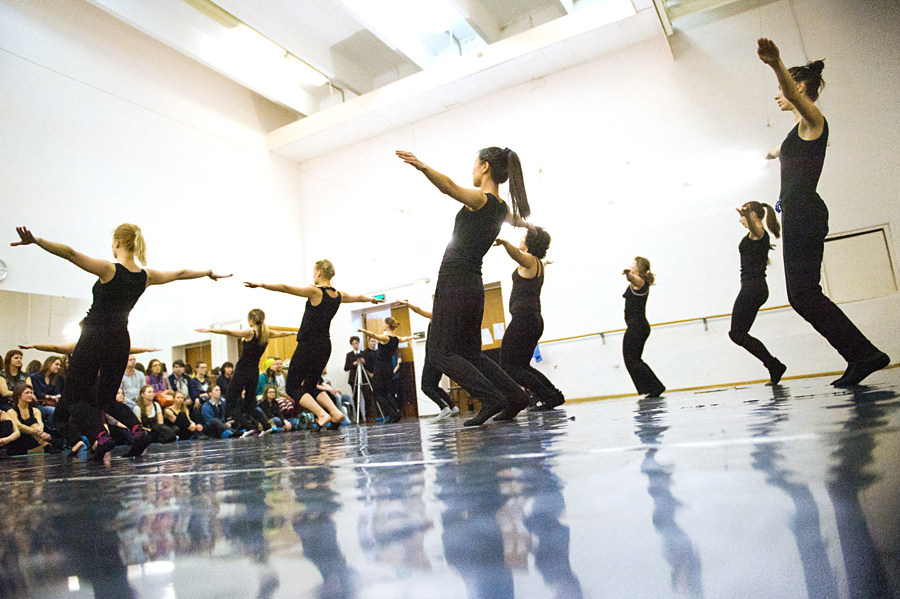
Authentic jazz brings together the elements of African-American vernacular, traditional dance. These elements are the individuality of the dancer, polyrhythmic patterns in addition to an already syncopated music, vitality and dynamism, improvisation, blended with a taste of personal exploration and freedom in composition. This is why it is continuously evolving, as it still is today.
Vernacular Jazz
Vernacular dances are dances which have developed naturally as a part of everyday culture within a particular community. In contrast to the elite and official culture, vernacular dances are usually learned naturally without formal instruction. Marshall and Stearn refer to vernacular jazz dance in its "street" form, in contrast to the show business form.
In “Steppin’ on the blues”, by Jacqui Malone, we read: “[...] the term vernacular refers to dance performed to the rhythms of African American music: dance that makes those rhythms visible”.
“[..
Albert Murray, Stomping the blues, p. 24 of Steppin’ the blues, J. Malone.] vernacular dance. It derives not from the “academy” but from the farms and the plantations of the South, slave festivals of the North [...]. Their work movements become dance movements and so do their play movements ; and so do all the movements they use every day, including the way they walk, stand, turn, wave, shake hands[…]”
In the book “Ballroom, Boogie, Shimmy Sham, Shake: A Social and Popular Dance Reader”, edited by Julie Malnig, the terms “social”, “vernacular” and “popular” are used interchangeably, although they carry slightly different connotations. Social carries a sense of dressiness and elevated environment, popular bespeaks widespread acceptance.
Most of the social and jazz dances described above are vernacular in the sense they spring from the lifeblood of communities and subcultures and are generally learned informally, through cultural and social networks
Julie Malnig, Introduction, p.4
According to Dollie Henry and Paul Jenkins, the early development of the jazz vernacular was influenced by dance steps and movements that can be recognised from the traditional African-American dance vocabulary and accompanying music. Although many of these have been lost, another part is still visible in derivative jazz dance styles like
-Cakewalk
-Charleston
-Hoffin'
-Tap dance
-The shuffle
-Turkey trot
-Buzzard lope
-Truckin
-The Lindy (hop)
Its hallmarks are improvisation and spontaneity, propulsive rhythm, call and response patterns, self expression, elegance and control.
As Lindsay Guarino and Wendy Oliver state, vernacular and authentic jazz are similar but not the same. All authentic jazz is vernacular jazz, but vernacular jazz is not limited to authentic jazz. While authentic jazz is vernacular jazz from the early 20th century, vernacular jazz refers to more than one period. It is fluid and constantly evolving.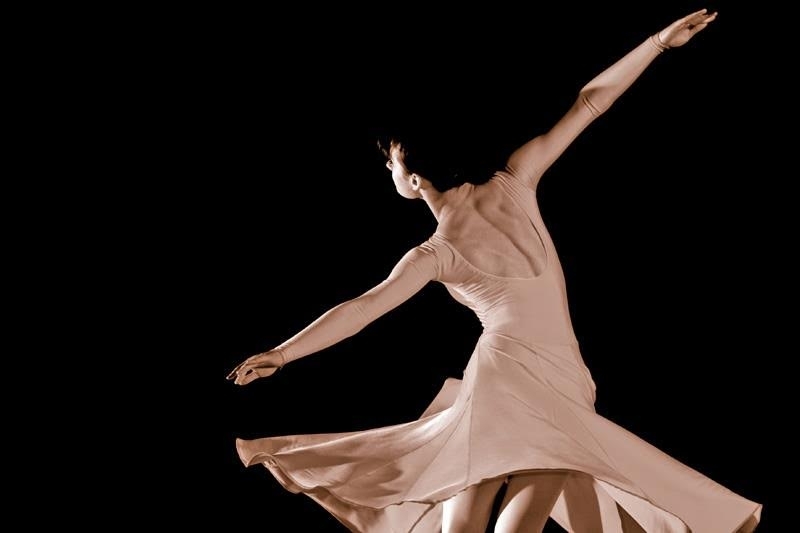
The authors of the “jazz dance styles” article highlight the following dance styles as branches of vernacular jazz dance today: hip hop, funk (urban funk), street jazz dance (L. Guarino and W. Oliver, Jazz Dance: A History of the Roots and Branches).
What is modern jazz?
In the UK throughout the 1970’s and 80’s the term modern jazz was generally used to describe traditional jazz dance as described above.
What is jazz in the academic dance world?
Jazz dance took on a metamorphosis during the 1950s with innovators such as Katherine Dunham, Jake Cole, and Bob Fosse.
In the academic dance world, what today is meant for “jazz” is basically a modern style that combines ballet technique, useful for jumps, leaps and pirouettes with elements of modern and contemporary dance. It is mainly characterised by body alignment, with the addition of contractions and tilts; it also includes percussive movement and fluid movement in a juxtaposition. Nevertheless, there’s still room for experimenting, hybridising and improvising.
Katherine Dunham reinforced jazz dance’s connection with its African origins through a dominating feminine energy and a style of dance. The style involved flexible torso movements, articulated pelvis and isolation of the limbs, polyrhythm combined with ballet technique. She is credited for shaping the modern jazz dance style and technique. Katherine Dunham technique was the result of African-Caribbean dances combined with ballet which was a signature element of her choreographies. This was the starting point for modern dance to evolve.
Katherine Mary Dunham was an African-American dancer, choreographer, author, educator, anthropologist, and social activist.In the meanwhile, Bob Fosse was highly influential in the development of jazz dance in movies. He was building upon Jack Cole’s popularisation of Theatrical jazz dance, whilst also weaving burlesque and vaudeville stylisations into his choreography.
Jack Cole, as an American dancer, choreographer, and theatre director known as "the Father of Theatrical Jazz Dance"Choreographer Bob Fosse leads dancers for the musical "Pleasures and Palaces" he directed in 1965.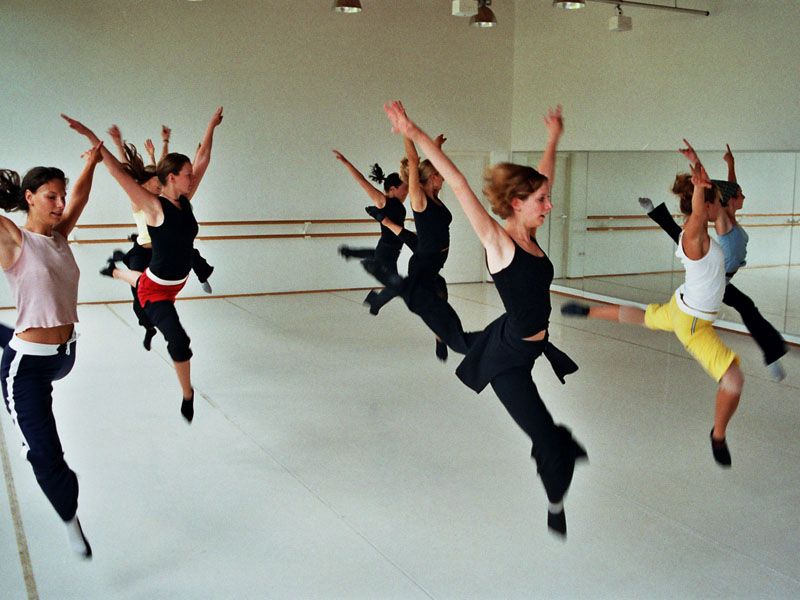
The transformation of jazz dance into theatrical jazz dance and the important role of professional technique and choreography, created “modern jazz dance”.
Eartha Kitt, foreground, and James Dean in a Dunham dance class in the early 1950s .Dennis Stock/Magnum PhotosPearl Primus was an American dancer, choreographer and anthropologist also gave her contribution to the development of modern dance. Like Katherine Dunham she was deeply interested in the African cultural heritage and how African traditional dances could play a key role in the development of modern American dance. She is credited to have presented African dance to American audiences, giving voice and dignifying vernacular traditional dances as true art forms.
Pearl Primus, a dancer, choreographer, and proselytizer for African dance, trained at the New Dance Group and worked with Asadata DaforaAs a dancer, Primus was distinctive in other ways. When her style is compared to that of the other leading black dancer, Katherine Dunham, it is clear that one of the few things they had in common was their use of dance elements from Africa and the Caribbean (from Perpener III 162-163, African-American concert dance).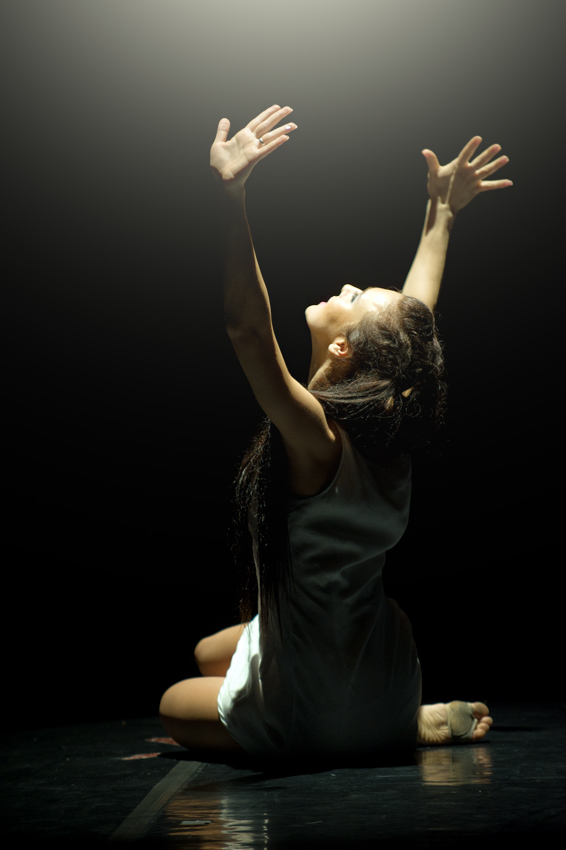
Conclusion
To sum up, by using Lindsay Guarino words, jazz dance has roots in West African traditional dance. It came to America via the transatlantic slave trade and then emerged as jazz in the 20s, 30s and 40s — which we now call the Jazz Era. Later it made it's way on to theatre stage, where stories were told through jazz dance, and covered its commercial side in film production.
Solo jazz dance is a general term used in nowadays swing dance community. It groups many dance styles that can refer to anything from the pre-cakewalk dances to post war era styles and be bop.
Authentic jazz is a term in use from 1950’s by Marshall Sterns, to describe vernacular (traditional) jazz dances that refer to the early 20th century. It includes the Cakewalk, the Charleston, the Black Bottom, and the Lindy hop.
Vernacular jazz is a term that refers to more than one period. Vernacular dances are the ones which have developed naturally as a part of everyday culture within a particular community.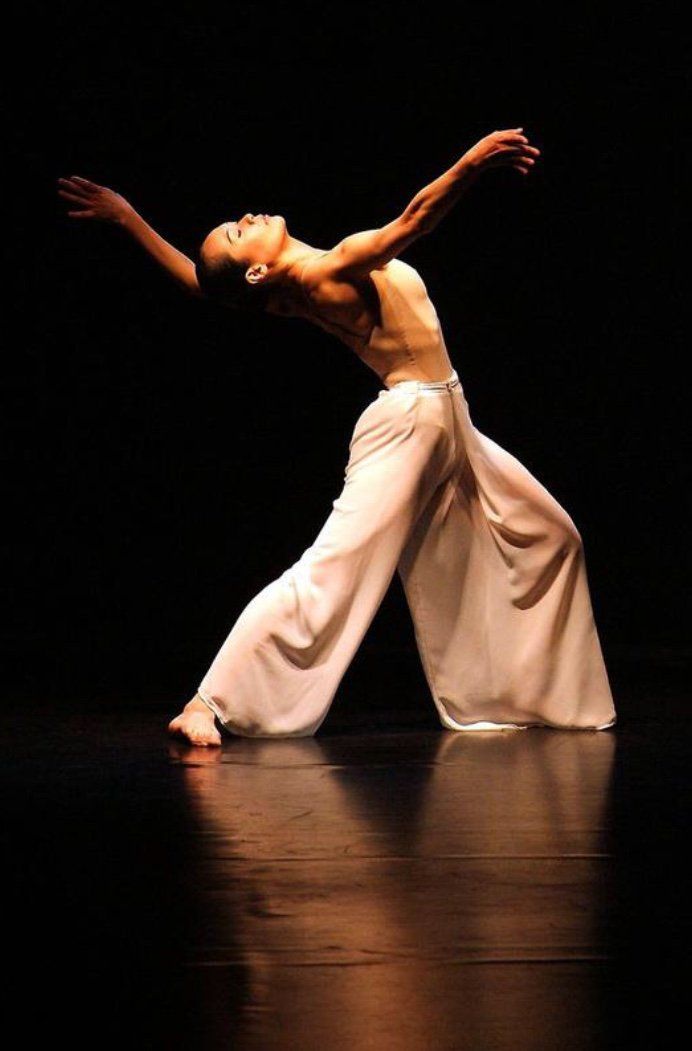
Modern jazz dance is a term used in the academic dance world. It refers to a modern style that combines ballet technique with elements of contemporary and African - derived dances (such as isolations, loose torso etc.).
Here on Secrets of Solo you can discover and learn solo jazz (authentic jazz and vernacular jazz) steps and choreographies. Our online solo jazz dance classes pay homage to the creators of these steps, and we try to pass on these traditions to current generations.
As the styles are continuously evolving we feel it is our responsibility to keep pushing the boundaries. Therefore more and more modern styles such as contemporary, waacking, vogue, and house are entering into our teaching repertoire. Consider signing up for Secrets of Solo online dance classes. You can check subscription plans here.
Bibliography and references:
The Essential Guide to Jazz Dance, Dollie Henry, Paul Jenkins
Jazz Dance: A History of its Roots and Branches
Representing Jazz, Krin Gabbard
Stomping the blues, Albert Murray
Ballroom, Boogie, Shimmy Sham, Shake: A Social and Popular Dance Reader
Modern Jazz dance. 1971, Dolores Kirton Cayou,
1971, Dolores Kirton Cayou,
Anthology of American Jazz dance Evanston. Illinois, USA, 1975, Gus Giordano
Creque Harris, Leah (1991). The Representation of African Dance on the Stage: From the early black musical to Pearl Primus. Atlanta, GA: Emory University
African-American Concert Ham The Harlem Renaissance and Beyond John 0. Perpener III
Co - writer and editor Ksenia Parkhatskaya
Jazz, modern
Jazz, contemporary, postmodern.
Types, founders and concepts of directions.
- /
- /
- /
- /
- /
The basic principle of jazz dance is improvisation. In modernity, the inner content of movement, the clarity of lines, the ability to work with breathing matter. Jazz-modern dance is an energetic and expressive, figurative dance, which took all the best from jazz choreography and modern, besides, it noticeably improves coordination of movements. Ballet and dances of various directions mixed up, and as a result, a completely new dance direction was born, which was called "jazz". It is believed that Africans created jazz dance, and the technique is based on Negro folklore mixed with dances of other emigrants living in the United States.
Ballet and dances of various directions mixed up, and as a result, a completely new dance direction was born, which was called "jazz". It is believed that Africans created jazz dance, and the technique is based on Negro folklore mixed with dances of other emigrants living in the United States.
Varieties of jazz dance. Styles and trends
Stage jazz (based on the work of choreographer Alvin Ailey). AFRO JAZZ
Characteristic for plastics: chest, hips, legs in a deep squat position, bounce, gravitate towards the lower level of space.
Stage Jazz. Soul jazz
Stage jazz. Blues jazz
Stage jazz. Lyrical
Stage jazz. Spirituals
Stage Jazz. Classic Jazz
The history of modern jazz
Performance styles:
"Primitive" : This style comes from African folk dances that were performed by slaves brought to America from Africa, the West Indies, Cuba, Panama and Haiti.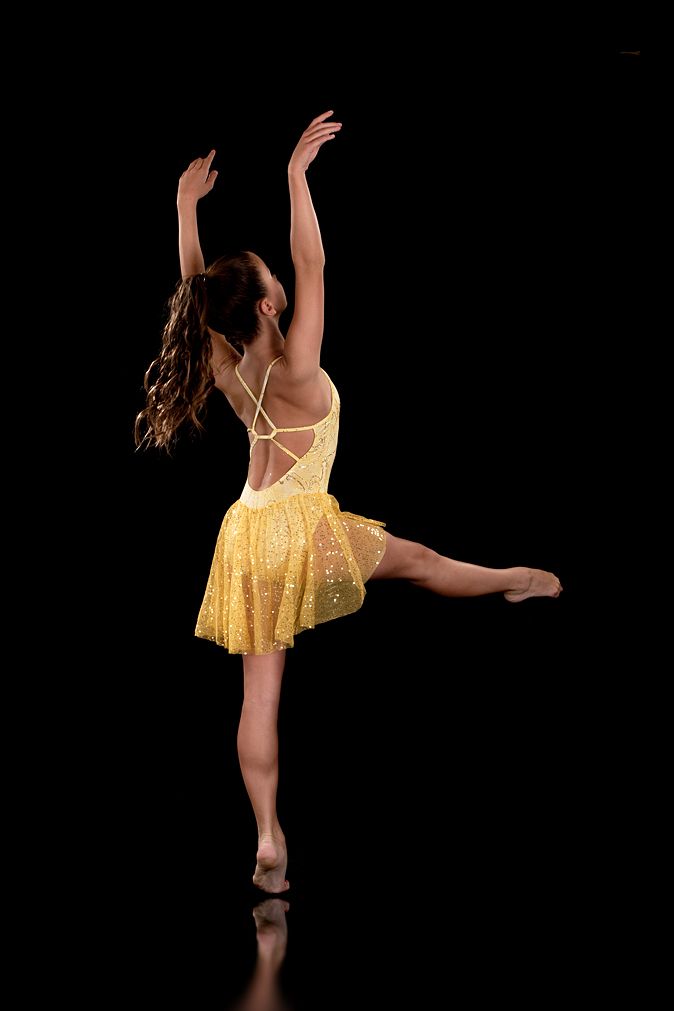
Early: The style is based on the music of the late 19th century. - early 20th century dances such as TwoStep, Cakewalk, Grizzly Bear, Bunny Hug, Turkey Trot and Texas Tommy, from which fast dances of the 1920s originated - one-Step, Lindy Hop, Charleston and Black Bottom.
It was the fusion of "black" and "white" dances that gave impetus to the emergence of a stage form of dance, which later became known as jazz dance.
Catherine Dunham - choreographer, dancer, writer, ethnographer, first began to develop the theory and methodology of jazz dance. On April 18, 1940, she presents in New York her first production of "Tropics and Hot Jazz" - from Haiti to Harlem, where she talks about the path of "black" jazz dance from the West Indies and New Orleans to Harlem. It is this
performance is called the transformation of "black" dance into stage art.
Musical Comedy/Theatrical Jazz : These styles were made popular by the films and theater productions of the 1930s and 1940s.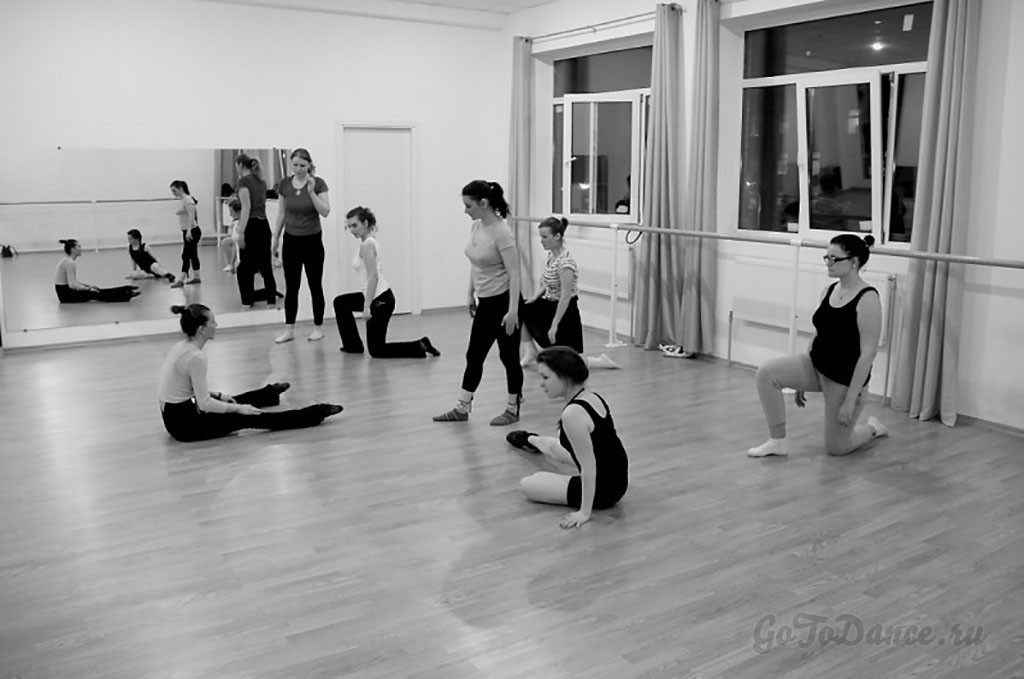 The musical jazz comedy style also incorporated elements of other dance styles. In the 1950s and 1960s, dance became an integral part of productions at the Musical Theatre. The musicals "Flower Drum Song", "Destry Rides Again", "West Side Story" and "Seven Brides for Seven Brothers" are examples of this. At 19In 1978, the musical "Dancing" showed that songs and books play a secondary role in the dance, they almost do not even exist.
The musical jazz comedy style also incorporated elements of other dance styles. In the 1950s and 1960s, dance became an integral part of productions at the Musical Theatre. The musicals "Flower Drum Song", "Destry Rides Again", "West Side Story" and "Seven Brides for Seven Brothers" are examples of this. At 19In 1978, the musical "Dancing" showed that songs and books play a secondary role in the dance, they almost do not even exist.
By the beginning of the 70s of the 20th century, several main schools of modern dance had developed: Martha Graham's technique, Doris Humphrey's technique, José Limon's technique, Merce Cunningham's technique.
At the same time, the technique of jazz dance developed and improved. Naturally, teachers and choreographers more and more synthesized various techniques and styles of dance in their lessons and performances.
A well-known teacher who created the modern dance technique was Lester Horton . Famous teachers and choreographers later came out of his school - A.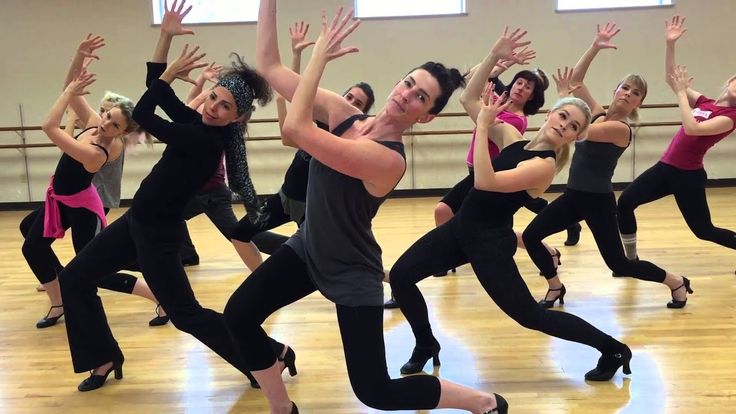 Ailey, D. Triit, J. Collins, K. Delavalad. This school laid the foundation for jazz modern dance, the technique of which combines jazz dance and modern dance.
Ailey, D. Triit, J. Collins, K. Delavalad. This school laid the foundation for jazz modern dance, the technique of which combines jazz dance and modern dance.
Jack Cole was the first teacher and choreographer to combine modern and jazz dance techniques. His system was called Hindi Jazz and combined the isolation technique of "black" dance, the movement of Indian folk dance and the achievements of "Denishawn" - the first school of modern dance. It was his student - Matt Mattox (Matt Mattox) who deserves the merit of the technique of modern jazz dance, in which he organically combined classical ballet and jazz. He began by studying classical ballet and tap dance, so in his teaching system, along with the technique of isolation, the use of various levels and steps of jazz dance, the movements of classical exercise are used.
Luigi (Eugene Louis), who studied with Bronislava Nijinska and Adolf Bolm, was one of the famous teachers who synthesized the techniques of classical dance and jazz in his methodology.
Another name among the founders of jazz-modern dance is Gus Giordano. In 1966, the first textbook written by Giordano and dedicated to the technique of jazz modern dance appeared. Until now, this textbook is the basis in the practice of many teachers around the world.
In the 60s of the 20th century there was an explosion of interest in jazz-modern dance in Western Europe as well. The first seminars began to be held at 1959, when Walter Nicke, a student of Catherine Dunham, arrived in Germany. He taught here until 1961, when he was replaced by a student, Alan Bernard. Thus, by the beginning of the 70s, a new phenomenon in dance practice and pedagogy arose - modern jazz dance. This school has won adherents in many countries of the world. It, like no other, allows the most comprehensive education of the dancer's body, which is important in everyday practical work, when the performer has to deal with choreographers of various styles, different directions and systems.
In 1975, the first textbook appeared (the author of the textbook is Gus Giordano), dedicated to the technique of modern jazz dance.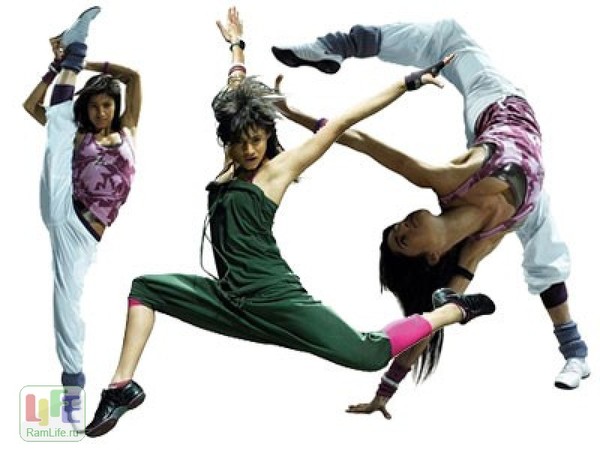 To this day, this textbook is the basis in the practice of teachers around the world.
To this day, this textbook is the basis in the practice of teachers around the world.
Modern to music popular in the current period of time, later, in the late 1950s - to the music of Modern Jazz, to the works of such musicians as Dizzy Gillespie, Art Tatum and Dave Brubeck
Today's Jazz Dance : The dance in this discipline can be performed using different styles and rhythms - Afro-Cuban, Oriental, Spanish, etc. The composition can be presented in the form of a character - a Cowboy, a Sailor, a Clown, etc., or it can be abstract in nature. The dance may also incorporate elements of Modern or Lyrical Jazz to music such as "Wind Beneath My Wings" by Betty Midler.
Note: Modern ballet should not be confused with Jazz discipline. Elements of Modern Ballet cannot be used in this discipline. It is allowed to use elements of other modern styles, such as Hip-Hop, Disco, Breakdance, however, they should not dominate the movements of the main style.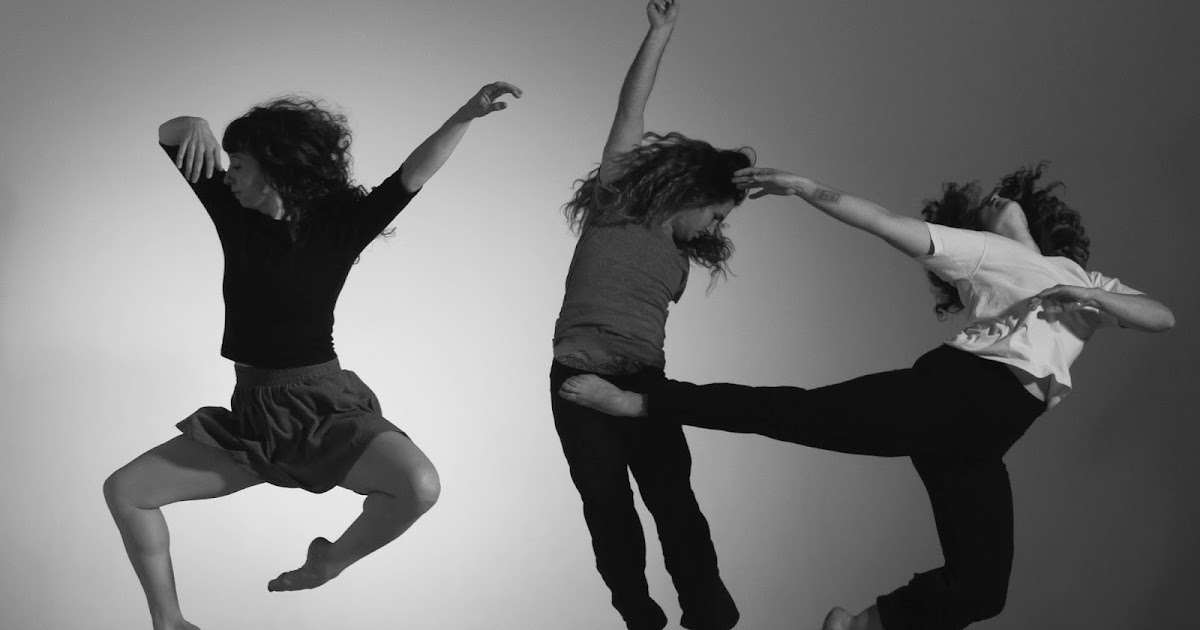
Jazz vs Show Dance
Sometimes it is very difficult to tell Show Dance from Jazz, however, there are some differences. There are a huge number of jazz styles - from the style of the 1920s to modern variations. As a rule, a Jazz number is just a dance, without any specific theme or idea. Jazz is a constantly evolving dance genre. Some may say that all street dances contain elements of Jazz. What is the difference between Jazz and Street Dance? Definitely music. It is music that dictates the style of dance. Does this mean that Hip-Hop or Breakdance motifs cannot be included in a jazz composition? Yes, because it is music that defines dance discipline.
However, Jazz dance can be performed to Hip-Hop or Breakdance music, but not vice versa.
Jazz in ORTO (IDO). General provisions
The following categories are presented in this discipline: Solo Men, Solo Women, Duet, Small Group and Formation.
1.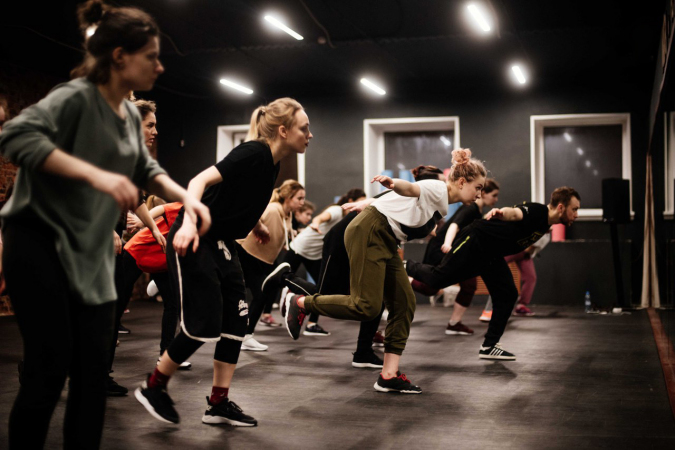 Characteristics of movement: Jazz is a multifaceted art form. The jazz styles listed above are just some of the variations that can be represented in this discipline.
Characteristics of movement: Jazz is a multifaceted art form. The jazz styles listed above are just some of the variations that can be represented in this discipline.
2. The whole number must consist only of elements characteristic of Jazz - jumps, port de bras, as well as movements of the legs and upper body. When grading, the coordination and rhythm of the dancers' movements are taken into account. Be sure to wear special shoes.
3. Acrobatic Movements: In this discipline, the use of acrobatic elements is allowed, provided that during their execution the dancer's body touches the ground, and if these movements do not dominate the dance over the others.
4. Lifts: The use of lifts in the dance is permitted in accordance with the General Regulations for Juniors and Seniors.
Note: Supports are NOT allowed in the Children category.
5. Props: The use of props is allowed in the following cases:
Costumes: Accessories such as hats, scarves, gloves, belts, etc. are allowed if they are part of the costume. Dancers can take them off, throw them off themselves or pass them to each other. It is forbidden to leave accessories on the stage at the end of the performance. If, for example, a participant throws off his scarf during the performance of the composition, then at the end of the performance, the speaker must pick up the scarf and take it away from the stage.
are allowed if they are part of the costume. Dancers can take them off, throw them off themselves or pass them to each other. It is forbidden to leave accessories on the stage at the end of the performance. If, for example, a participant throws off his scarf during the performance of the composition, then at the end of the performance, the speaker must pick up the scarf and take it away from the stage.
Hand props: Hand props (canes, umbrellas, suitcases, mirrors, flags, etc.) are allowed if the prop is an integral part of the dance. Dancers may place props on the floor during their performance, but must remove the props from the stage at the end of the performance. Hand props cannot be used as floor props. In other words, you cannot, for example, go on stage with an umbrella, put it on the floor and dance the entire dance without using an umbrella.
Floor props: Floor props (chairs, boxes, ladders, etc.) may be used, provided that the dancers themselves carry them out when entering the stage. Floor props must be an integral part of the dance and used during the entire composition. The use of items to decorate the stage is prohibited. At the end of the performance, the dancers are required to remove the props from the stage.
Floor props must be an integral part of the dance and used during the entire composition. The use of items to decorate the stage is prohibited. At the end of the performance, the dancers are required to remove the props from the stage.
Decorations: The use of any decorations is prohibited.
6. Singing to the phonogram is prohibited in this nomination.
As a rule, the dance in the discipline Show Dance has a theme, tells a story, but other options are possible. For example, a dance may be based on emotion, a color, or a word.
Jazz style dance does not have to obey any idea, only dance can be the basis of the composition.
Modern technique can form the basis of Jazz or Show Dance. However, it depends on how much the number is "show". A lyrical composition performed in the Show Dance category for a song by Whitney Houston without a specific theme or idea may receive low marks on the 4-D system. However, if a composition is rated in 3-D, higher scores for the same composition are possible.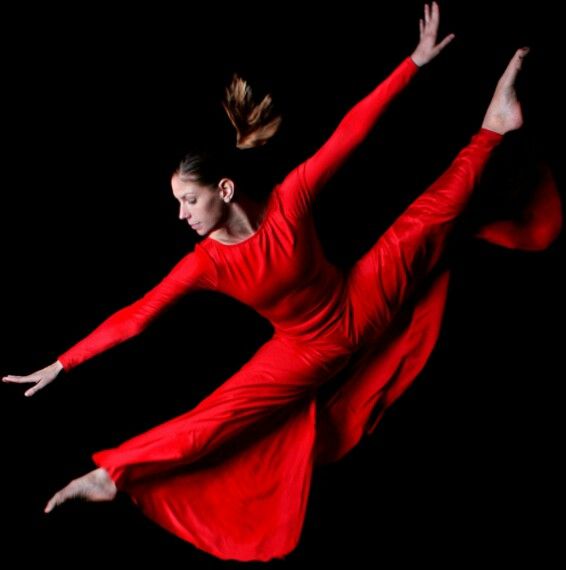
In the discipline of Show Dance, the ability of the participants to reveal the theme of the dance with the help of technique is of great importance. The choreography of the dance and how it is presented by the dancer must be of stage value. An important role is also played by the image created by the dancer. However, in the Jazz nomination, the stage value of the dance should not affect the judges' scores. Grades should be given only according to the relevant parameters: for the technique, choreography and image, the general appearance of the dancer.
Modern in ORTO (IDO). General provisions
The following categories are presented in this discipline: Solo Men, Solo Women, Duet, Small Group and Formation.
Modern is an art form that has incorporated elements of many dance styles and has evolved and changed over the years.
Modern is one of the most free and flexible styles of dance, in which the choreographer uses mood and emotion to build a composition, in contrast to Ballet, in which all movements are clearly structured. In Modern, in many elements, the force of gravity, gravity is deliberately beaten, while in Ballet all movements are light and airy.
In Modern, in many elements, the force of gravity, gravity is deliberately beaten, while in Ballet all movements are light and airy.
The development of the Modern style logically follows from the dance styles of the 20th century. At the time, many dancers sought to move beyond the rigid boundaries of Ballet, which they considered too inflexible, strict, and restrictive. They were looking for new forms and techniques, and, as a result, laid the foundation for a new dance style.
This dance discipline uses modern dance techniques, mostly created in the first half of the 20th century by great European and American dancers and choreographers such as Martha Graham, Jose Limon, Alvin Ailey, Merce Cunningham, Lester Horton, Mary Wigman, Chania Holm and others.
However, this does not mean at all that dancers performing in the Art Nouveau style should use only the techniques of the last century in their original form. On the contrary, the use of modern trends and completely new, experimental techniques, original ideas in dance is welcome.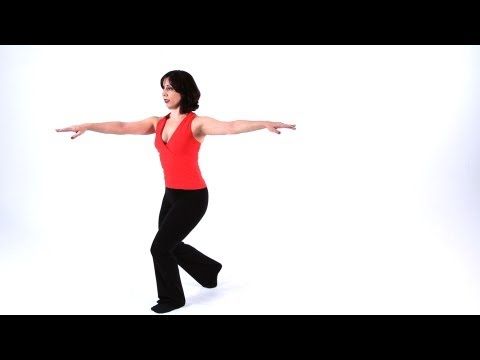 Modern constantly tells new things about the body, about how it works, offers a different quality of movement and self-expression, gives space for creativity and experimentation.
Modern constantly tells new things about the body, about how it works, offers a different quality of movement and self-expression, gives space for creativity and experimentation.
1. Characteristics of movements: The dance must include elements of modern dance techniques and new trends, as well as correspond to the age category and dance skills of the participants.
The inclusion of Modern Ballet elements in the composition is not allowed. It is allowed to use elements of other modern styles, such as Hip-Hop, Disco, Breakdance, however, they should not dominate the movements of the main style.
The main criterion for evaluating the performance is the level of dance training of the participants along with the theme, the idea of the dance. History, the plot of the dance are also taken into account, however, they are not given the same importance as, for example, in Show Dance. First of all, the mood, the emotional message of the composition is evaluated.
In this discipline, the idea or concept of a dance, its theme must correspond to the age category of the participants, especially if the composition touches on the theme of a person’s personal experiences, his close relationships with other people.
2. Acrobatic elements and lifts: The use of acrobatic movements is allowed if justified by the theme of the composition. A large number of gymnastic movements are not allowed. Modern dance should not look like an acrobatic act. Supports are prohibited in the Children category.
3. Props and decorations: Props are allowed, but they must not overshadow the dance. The use of backs is prohibited.
4. Costumes: The costumes of the dancers must be well chosen from an aesthetic point of view and in accordance with the age of the participants , terms)
ARCH [arch] - arch, back deflection of the torso.
ALLONGE, ARRONDIE [alonge, arondi] - the position of a rounded or elongated arm.
ASSEMBLE [assembly] - a jump from one foot to two is performed with the legs abducted in a given direction and collecting the legs during the jump together.
BODY ROLL [body roll] - a group of torso tilts associated with the alternate movement of the center of the body in the lateral or frontal plane (synonymous with 'wave').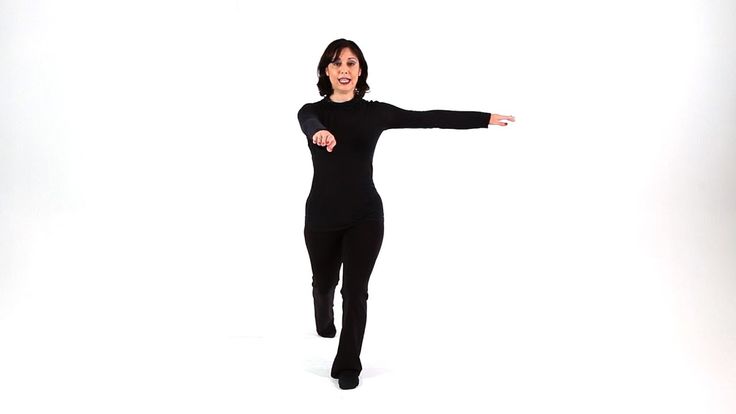
BOUNCE [bounce] - springboard swaying up and down, mainly occurs either due to flexion and extension of the knees, or pulsating tilts of the torso.
BATTEMENT TENDU [batman tandu] - the movement of the leg, which is retracted to the toe forward, backward or to the side with a sliding motion. In modern jazz dance, it is also performed in parallel positions.
BRUCH [brush] - sliding or smearing the whole foot on the floor before opening the leg into the air or when closing into position.
CONTRACTION [contraction] - compression, reduction of the volume of the body and rounding of the spine, begins in the center of the pelvis, gradually capturing the entire spine, performed on exhalation.
CORKSCREW TURN [corkscrew] - 'corkscrew' turns, in which the performer increases or decreases the level of rotation.
COUPE [coupe] - a quick substitution of one leg for another, serving as an impetus for a jump or other movement.
CURVE [curf] - bending of the upper part of the spine (up to the 'solar plexus') forward or to the side.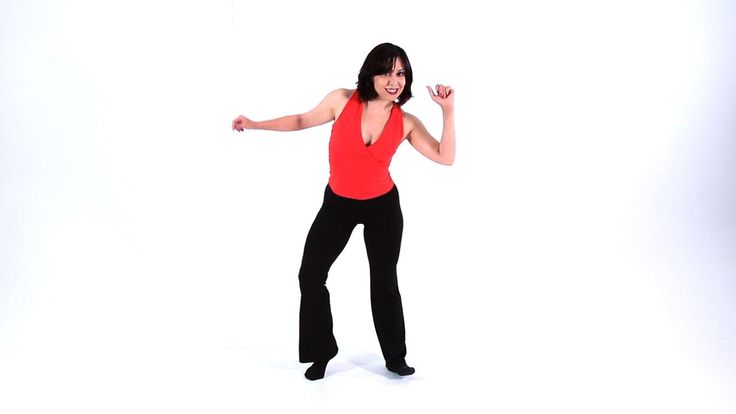
DEEP BODY BEND [deep body band] - lean the torso forward below 90°, while maintaining a straight line of the torso and arms.
DEEP CONTRACTION [deep contraction] - a strong compression in the center of the body, in which all joints participate, i.e. this movement includes arms, legs and head.
DEGAGE [degage] - transferring the weight of the body from one leg to another in the second position (right, left) and in the fourth position of the legs (forward, backward), can be performed both with demi-plie and with extended legs. Synonym for shift.
DEMI-PLIE [demi-plie] - semi-squatting, in which the heels do not come off the floor.
DEMIROND [demi rond] - a semicircle with the toe of the foot on the floor forward and to the side, or back and to the side.
DROP [drop] - falling of a relaxed torso forward or to the side.
EN DEDANS [an dedan] - the direction of movement or turn towards oneself, inward.
EN DEHORS [an deor] - the direction of movement or turn from oneself or outward.
ECARTE [ekarte] - a pose of classical dance (a la seconde), turned diagonally forward or backward, the body is slightly deviated from the raised leg.
EPAULMENT [epolman] - the position of the dancer, turned in 3/4 in bar 8 or bar 2; differs epaulement croise (closed) and epaulement efface (erased, open)
FLAT BACK [flat back] - tilt of the torso forward, to the side (by 90 °), back with a straight back, without bending the torso.
FLAT STEP [flat step] - a step in which the entire foot is simultaneously placed on the floor.
FLEX [flex] - reduced foot, hand or knees.
FLIK [flick] - a foot stroke on the floor to the supporting leg.
FOUETTE [fuette] - a turn technique in which the performer's body turns to a leg fixed in a certain position (on the floor or in the air).
FROG-POSITION [frog-position] - a sitting position, in which the legs bent at the knees touch each other with the feet, the knees should be maximally opened to the sides, left or back and forth.
GRAND BATTEMENT [grand batman] - throwing a leg 90 ° and higher forward, backward or to the side.
GRAND JETE [grand jet] - jump from one foot to the other moving forward, backward or sideways. The legs open up to the maximum and take the position of 'split' in the air.
GRAND PLIE [gran plie] - full squat.
HIGH RELEASE [high release] - high expansion, a movement consisting of lifting the chest with a slight backward bend.
HINGE [hinch] - the position of the dancer, in which the straight, without bends, the torso leans back to the maximum distance, the knees are bent, the feet are on half-toes,
HIP LIFT [hip lift] - lifting the hip up.
NOR [hop] - step-jump, 'working' leg is usually in the 'knee' position.
JACK KNIFE [jack knife] - body position in which the torso leans forward, the back is straight, resting on the hands, knees extended, legs in the second parallel position, heels do not come off the floor.
JAZZ HAND [jazz hand] - the position of the hand, in which the fingers are tense and spread apart.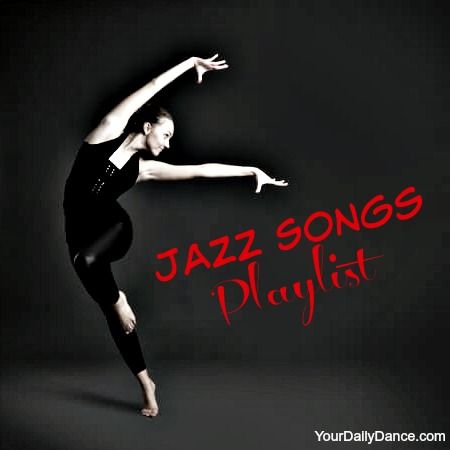
JELLY ROLL [jelly roll] - a movement of the pelvis, consisting of a small contraction of the muscles with a simultaneous slight turn of the pelvis to the right and left (synonymous with the pelvis shake.) are retracted behind the chest, the forearms are parallel to the floor.
JUMP [jump] - jump on two legs.
KICK [kick] - throw the leg forward or to the side by 45 ° or 90° through developpe take-out,
LAY OUT [lay out] - a position in which the leg, open 90° to the side or back, and the torso form one straight line.
LEAP [liip] - jump from one foot to another moving forward or sideways.
LOCOMOTOR [locomotor] - a circular movement of arms bent at the elbows along the torso.
LOW BACK [low back] - rounding of the spine in the lumbar-thoracic region.
Pas balance It is performed with the advancement from side to side, less often - back and forth.
PAS CHASSE [pa chasse] - an auxiliary jump with advancement in all directions, during which one leg 'catches up' with the other at the highest point of the jump.
PAS DE BOURREE [pas de bourre] - an auxiliary dance step, consisting of alternating steps from one foot to the other, ending in demi-plle. Synonym for step pas de bourree. In modern jazz dance, the position of sur le cou-de-pied is not fixed during pas de bourree.
PAS DE CHAT [pas de sha] - a jump, a cat's limiting jump. Legs bent at the knees are thrown back.
PAS FAILLJ [pa fail] - a connecting step, consisting of passing the free leg through the passing demlplie in position I forward or backward, then the weight of the body is transferred to the leg with some deviation from the vertical axis.
PASSE [passe] - a passing movement, which is a link when moving the leg from one position to another, can be performed in the first position on the floor (passepar terre), or at 45 ° or 90 °.
PIQUE [peak] - a light injection with the fingertips of the 'working' leg on the floor and lifting the leg to a given height.
PIROUTTE [pirouette] - rotation of the performer on one leg en dehors or en dedans, the second leg in the position sur le cou-de-pied.
PLIE RELEVE [plie releve] - the position of the legs on half-toes with bent knees.
POINT [point] - the extended position of the foot.
PRANCE [price] - movement for the development of foot mobility, consisting of a quick change of position 'half-lalse' and point.
PREPARATION [preparation] - a preparatory movement performed before the start of the exercise.
PRESS-POSITION [press position] - the position of the hands, in which the arms bent at the elbows with the palms touch the hips in front or side.
RELEASE [release] - expansion of the volume of the body, which occurs on inspiration.
RELEVE [relevé] - lifting on half-fingers.
RENVERSE [ranverse] - a sharp bending of the body, mainly from the pose of atitude croise, accompanied by pas de bouree en tournant.
ROLL DOWN [roll down] - a spiral downward-forward tilt, starting from the head.
ROLL UP [roll an] - a reverse movement associated with a gradual unwinding and straightening of the torso to its original position.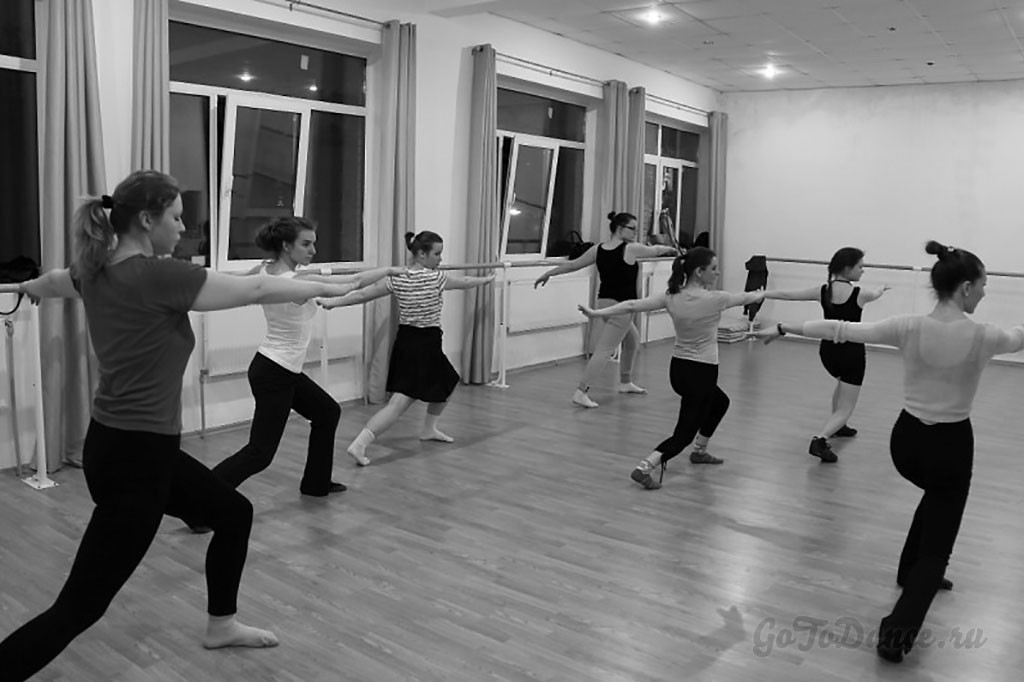
ROND DE JAM BE PAR TERRE [ron de jamb par terre] - a circle with an outstretched leg, touching the floor with your fingers.
ROVD DE JAM BE EN L 'AIR [ron de jamb anler] - a circular movement of the lower leg (ankle) with a fixed hip, set aside to a height of 45 ° or 90 °.
SAUTE [saute] - classical dance jump from two legs to two legs in I, II, IV and V positions.
SHIMMI [shimmy] - a spiral, twisting movement of the pelvis to the right and left,
SIDE STRETCH [side stretch] - lateral stretching of the torso, tilting the torso to the right or left.
SISSON OUVERTE [sisson overt] - a jump with flying forward, backward or to the side, upon landing one leg remains open in the air at a given height or in a given position.
SOUTENU EN TQURNANT [sutenu an turnan] - a turn on two legs, starting with the retraction of the 'working * leg into the fifth position.
SQUARE [skvea] - four steps in a square: forward-to-side-back-to-side.
STEP BALL CHANGE [step ball change] - a connecting step, consisting of a step to the side or forward and two steps on the half-toes (a synonym for step pa de hour of its
SUNDARI [zundari] - head movement, which consists in shifting the cervical vertebrae to the right and left and
SURLE COU-DE-PIED [sur le cou-de-pied] - the position of the extended foot of the 'working' leg on the ankle of the supporting leg in front or behind.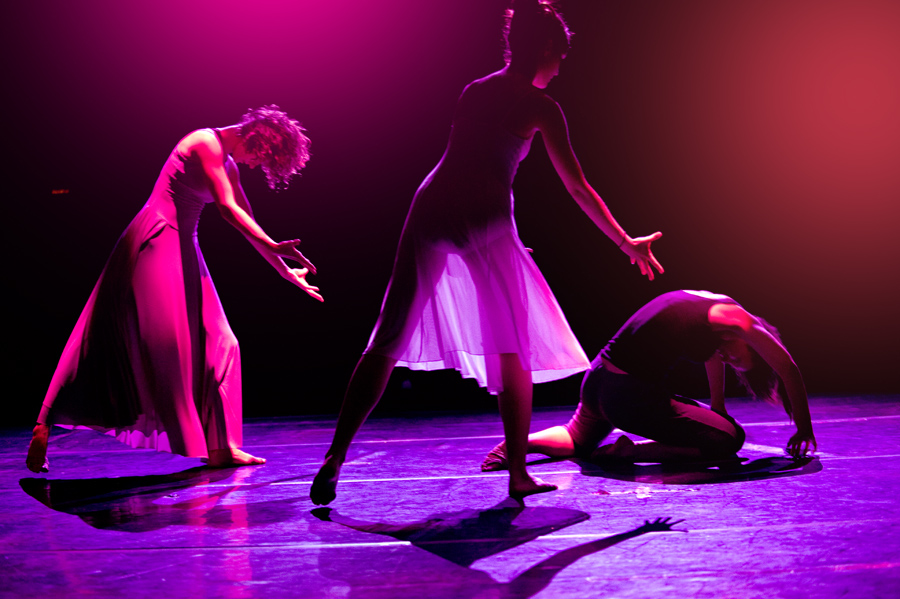
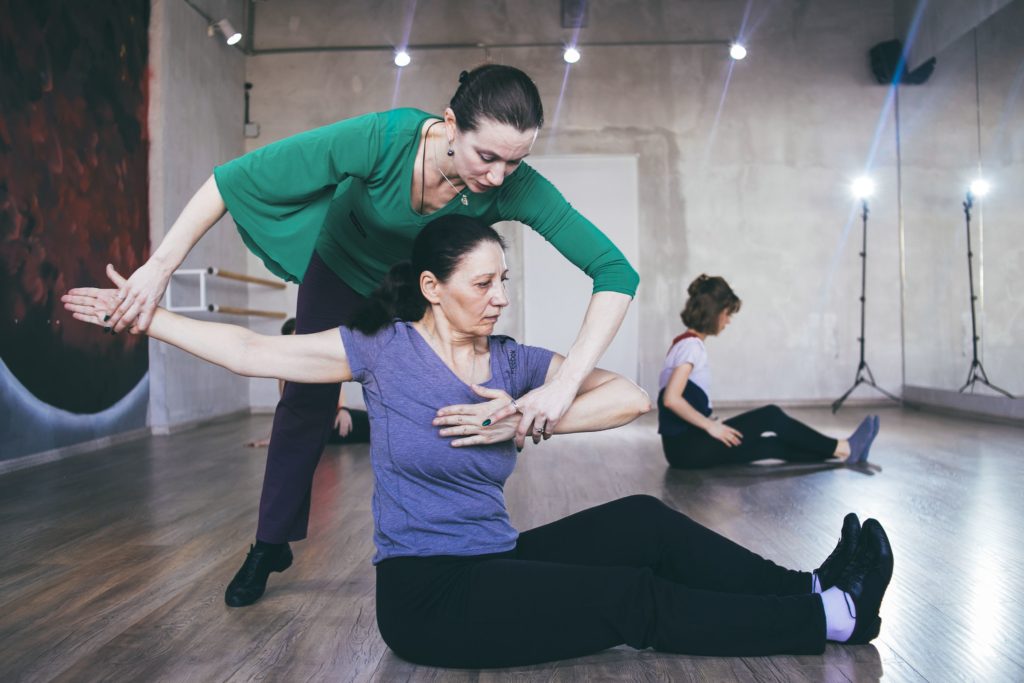 Katherine Dunham brought a vast variety of style and ethics to Broadway from regions of South America, Africa, Europe, and East Asia. She established the Katherine Dunham School of Dance and Theatre right in the epicenter of the Broadway explosion in 1945. Where countless inspired performers wanted to start their career.
Katherine Dunham brought a vast variety of style and ethics to Broadway from regions of South America, Africa, Europe, and East Asia. She established the Katherine Dunham School of Dance and Theatre right in the epicenter of the Broadway explosion in 1945. Where countless inspired performers wanted to start their career. Countless moves were originally choreographed by Bob Fosse in 1969 for a music video of “Mexican Breakfast”.
Countless moves were originally choreographed by Bob Fosse in 1969 for a music video of “Mexican Breakfast”.
